Renewable power is an ever-growing innovation with the goal to bring down costs and deliver on the promise of a “clean energy future”. In Canada, this delivery of a clean future is broken into two main low carbon electricity generating energy sources: wind and solar, which are replacing “dirty” fossil fuels. While it’s increasingly important we transition into renewable energy, it is important to carefully consider a full range of merits and drawbacks associated with all forms of renewable energy, whether emissions associated with biomass energy systems, loss of wildlife habitat associated with large hydroelectric dams, or wildlife risks associated with wind generating installations.
What is Renewable Energy?
Simply put, renewable energy, also known as clean energy, is derived from natural processes that are replenished at a rate that is equal to or faster than the rate at which they are consumed.
There are various forms of renewable energy, including wind, solar, biomass, geothermal, hydropower, ocean resources, solid biomass, and liquid biofuels. Each type of renewable energy contributes in a different way, and each technology can be integrated in a way that is often combined with other technologies to leverage the merits of each technology while managing their shortfalls to achieve improved performance and resiliency.
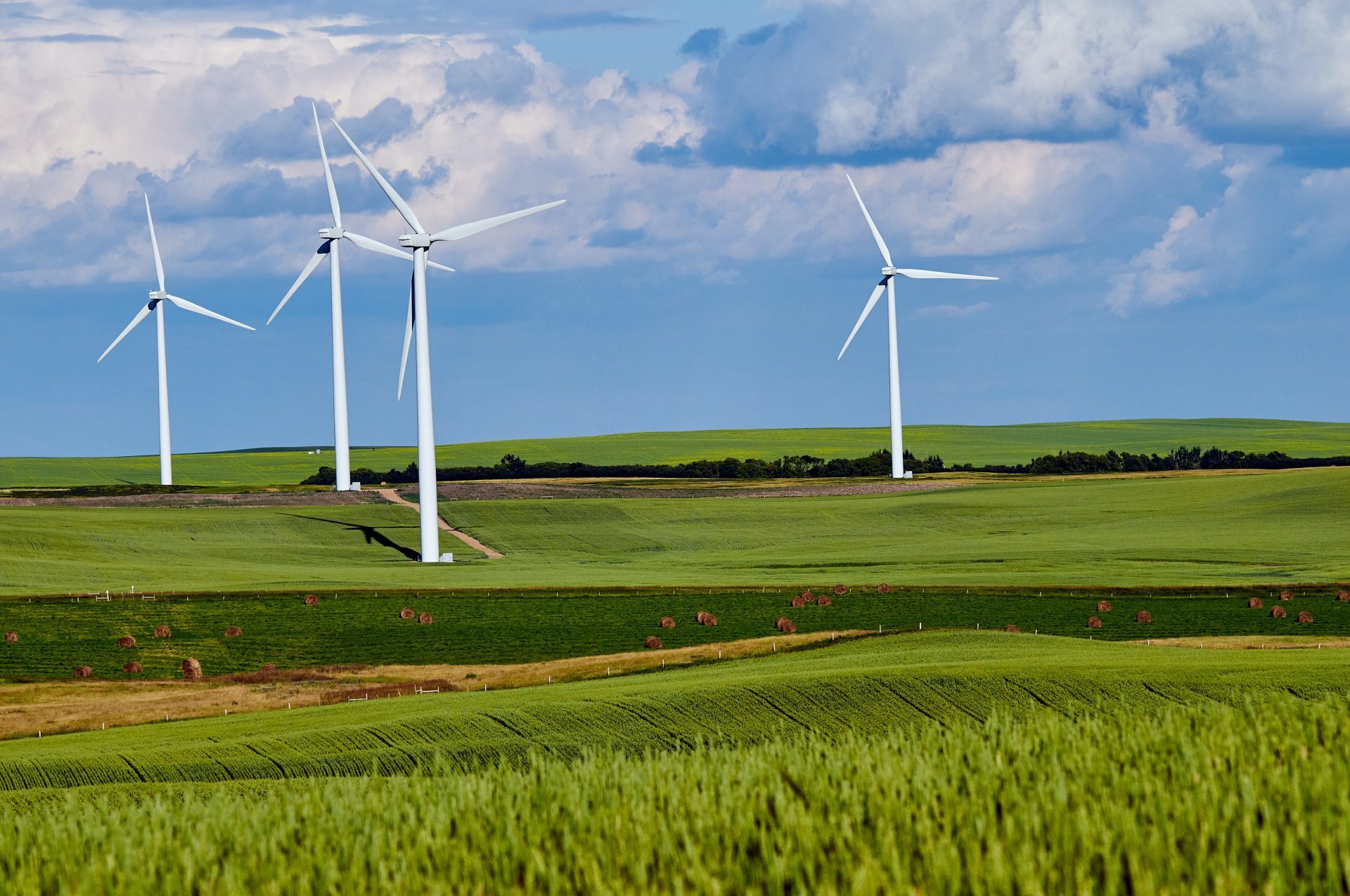
These emerging technology applications harness the power of nature for transportation, heating, lighting and so much more. It has developed due to the growing demand for less costly and more reliable energy alternatives to dirtier energy sources such as coal and fracked gas. Through innovation, the expansion of renewables has accelerated, and communities of all sizes are adopting clean energy. Renewable energy continues to grow, from rooftop solar panels to giant offshore wind farms, and countries are adapting to become more secure, safe, and better integrated each day.
Solar Energy
Our journey with solar energy has been ongoing for years as humans have been harnessing that energy to grow crops, stay warm and dry foods – although our process has changed. Today we heat homes, power devices and warm our water. Even more interesting, according to the National Renewable Energy Laboratory, “more energy from the sun falls on the earth in one hour than is used by everyone in the world in one year”, illustrating the scale of opportunity for solar as a renewable resource.

Solar power is the conversion of energy from sunlight into electricity. “Solar photovoltaics (PV) are rapidly becoming an economical, renewable technology to harness renewable energy from the sun” (Government of Canada, 2020). Distributed solar energy generates energy for homes and local businesses, either through rooftop panels or community projects that can power an entire neighborhood.
Solar energy does not produce greenhouse gases or air pollutants. Additionally, solar panels result in minimal environmental impacts beyond that of the manufacturing process.
Case Study: Nicola Valley Institute of Technology, Merritt, B.C
In 2018, the team at Falcon Engineering designed and supervised the installation of solar photovoltaic arrays to maximize energy production.
The gymnasium roof had a production array while, on the classroom block roof, an array was installed with 4 rows of panels: 3 rows at different tilt angles, and the fourth that had the ability to rotate its orientation (azimuth). Each row is separately metered and with power optimizers on each panel, so students can monitor in real-time the effects each installation has on the production of energy.
Since its installation in July 2018, the system has generated over 82 MWh of energy and has saved more than 32 tons in CO2 emissions – which is an incredible result!
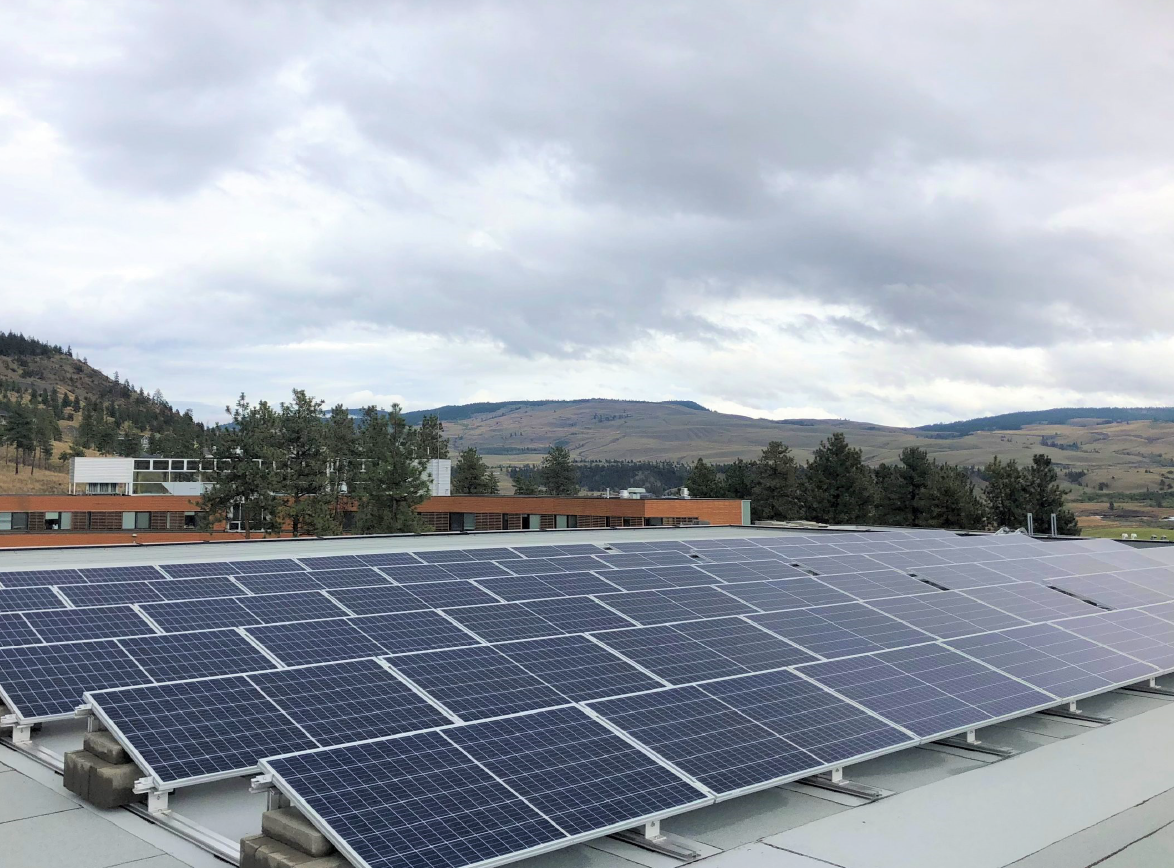
Explore more of our previous projects, including our renewable energy projects here.
Conclusion
Falcon is a leader in the development and innovation of green, energy-efficient building systems. The team at Falcon provides electrical solutions for renewable energy, security systems, lighting design, and medium-voltage power. Led by our Principals Bruce Candline, Kent Galloway, Loïc Letailleur and Dan Le Blanc, our electrical engineering practice is the largest within the BC Interior.
If you have questions about our experience or the work we do with renewable energy sources, get in contact by using our contact page.
Want to learn more about energy engineering? Check out some of our other blogs!
If someone asked you to name the elements of a sprinkler system, could you do it? You’ve most likely seen certain elements before; on a basic level, there are sprinkler heads, piping, and valves – but there is so much more! A sprinkler system is designed to control or extinguish fires in the early stages, making it easier and safer for building occupants to exit the building, and for firefighters to extinguish any fire that remains.
Beyond the importance of having a fire sprinkler system, an efficient layout/design is required to allow for cost control and high performance. The variations in building design, and the coordination needed based on components within the building, make fire sprinklers complicated in design. However, understanding the fundamentals of sprinkler design will provide good insight into the specific needs of the project and the detail required for specifications.
Determining the Water Supply
A fire sprinkler system begins with water and having enough of it to control a fire. Most sprinkler systems are automatic, meaning human intervention isn’t necessary. Because of this, a source is required, which can include city water, ponds, rivers, reservoirs, water tanks, and more. No matter the source, it must have a sufficient capacity.
Factors that determine the capacity include:
- Flow Rate (Gallons per minute/GPM)
- Pressure (Pounds per square inch/PSI)
- Duration (How long it can maintain the required pressure & flow)
- Flow Test (provided by nearby fire hydrants)

Water supply is fundamental in the development of a sprinkler system, no matter the building layout.
Understanding the Building

As simple as it sounds, to determine the sprinkler system required, you need to understand the building. Typically, once a contractor has been selected, the contractor then engages their engineer during construction. Unfortunately, this approach can hamper coordination between the sprinkler system and other building elements. Common questions to ask are: Is this a commercial project? Industrial? Or are there specifics required for the building?
For projects where a performance specification is not appropriate, however, our team can provide full sprinkler design services including:
- Sprinkler head layout
- Pipe layouts
- Pipe sizing
Wet, Dry, or Preaction System?
Beyond the capacity and building demands, it’s necessary to determine if a wet, dry, or preaction system is required. Fire sprinkler engineering services offered by Falcon include wet and dry systems, pre-action systems, and specialty gaseous systems for mission-critical infrastructure.
Wet systems, which have pipes filled with water at all times, are the most commonly used system for buildings. Water flows when each sprinkler head reaches its design temperature and the glass element bursts, allowing a plug to drop out.
Dry systems, as the name suggests, don’t contain any water, and are pressurized with air. When a sprinkler head activates, the air is discharged, causing an automatic valve to open and allow water into the piping system. Dry systems are generally reserved for areas with freezing concerns. Lastly, there are preaction systems, where the cost of an accidental discharge would be severe, in places such as data rooms. In this system, water is held back by a preactivation valve and activation relies on a separate trigger, providing another layer of protection or control when activating water.

Conclusion
If there is one point we hope you take away from this, it is that fire sprinkler systems are complicated yet essential. While there are many factors to consider with these systems, evaluation, assessment, and specifications are instrumental to the performance of the system.
At Falcon Engineering, we can offer performance specifications or full design and engineering services, depending on the specific needs of the project. We are committed to providing effective system designs for mechanical projects.
Should you have any questions about how our team can help you with your mechanical projects, including Fire sprinkler engineering, get in contact by using our contact page.
Check out our service offerings here.
Want to learn more about mechanical engineering? Check out some of our other blogs!
- Benefits Of Troubleshooting Your HVAC System
- Niche Mechanical Engineering Services
- 6 Ways To Make Your Classroom More Comfortable During Highly Variable Temperatures
What is Geoexchange?
To introduce this topic, let’s start off with an interesting fact: Anything with a temperature above absolute zero (-273°C) has heat energy in it. As well, anything warmer than absolute zero has stored energy. Geoexchange technology captures and uses stored heat from the ground for providing energy-efficient heating and cooling for buildings ranging from single family residential homes to the largest institutional and commercial buildings. What makes geothermal energy even more interesting, is that this isn’t new technology. The technology has existed for decades and has been improved, and adapted upon. With wise and thoughtful design adapted to specific site conditions, geoexchange systems can be cost-effective, and can be adapted for homes, commercial and institutional buildings, and industrial process applications.
Why is there a growing interest in Geoexchange?
Geoexchange heating and cooling (also sometimes referred to as ground source heat pump technology, or geothermal heat pump technology) is a technology option often considered as a part of electrification strategies for decarbonizing heating loads. In many applications, well-designed geoexchange systems can eliminate, or nearly eliminate, carbon emissions associated with building heating and cooling.
How does it work?
The geoexchange principle relies on a specific application of the refrigeration cycle for transferring heat from one place to another. By moving heat instead of converting chemical energy into heat (e.g. fossil fuel combustion), geoexchange systems can often provide space and/or process heating (and cooling) in a much more energy-efficient manner than conventional heating or cooling systems. Geoexchange heat pumps can extract energy from low-grade heat sources (at temperatures below 5°C) and “concentrate” the heat to a higher temperature for delivery to a heated environment. Hence, heat pumps can be coupled to a ground heat exchanger (often consisting of buried piping within the earth) so that the ground becomes the heat source for the system.
The energy-efficiency of a heat pump is dependent on the temperature of the source/sink that it is coupled with. In heating mode, the energy-efficiency increases as the source temperature increases. In cooling mode, the energy-efficiency increases as the rejection temperature decreases. Because the undisturbed earth temperature is warmer than the average winter air temperatures and cooler than average summer air temperatures, the ground makes for an attractive heat source for winter heating and heat sink for summer cooling.

Geoexchange Harnesses Renewable Energy
The ground energy harnessed by geoexchange systems is renewable energy. Most of the energy captured by geoexchange is solar energy absorbed by the earth’s crust while a smaller portion is core geothermal energy. In the geologically diverse western cordillera of BC, the core geothermal component varies from site to site and in some cases anomalously high geothermal gradients may cause the core geothermal component to be significant. Although electrical energy is required to drive the heat pumps, carefully designed geoexchange systems are capable of achieving coefficients of performance (COP) exceeding 3.5 in heating mode (COP is the ratio of the total heat delivered by the heat pumps relative to the electrical energy required to drive the heat pumps). At a COP of 3.5, 71% of the total heat delivered is renewable energy transferred from the ground and the remaining 29% is derived from grid electricity.
Ground Heat Exchangers (GHX)
Ground heat exchangers (GHXs) can take many forms, but all forms belong to one of two broad categories:
- Closed-loop GHX systems which rely on conductive heat transfer between the earth and a network of piping through which a heat transfer fluid is circulated in a closed-cycle. Examples of closed-loop GHX include vertical closed-loop borehole systems and horizontal trenched piping systems.
- Open-loop GHX systems which rely on the actual transfer of groundwater or surface water through the geoexchange cycle.
The four most common types of GHX are:
- Vertical borehole GHX – Closed-loop (V-GHX). This method involves drilling a network of boreholes that are each typically 50 to 250 m deep (depth often depending on site-specific constructability factors). Two pipes are placed in each borehole with a u-bend connection at the bottom and heat transfer fluid is circulated through the borehole network. This is the most versatile method and can be adapted to the widest range of settings. However, the vertical borehole GHX method is typically the most expensive option when other options are available.
- Horizontal trenched GHX – Closed-loop (HT-GHX). This method involves installing heat exchange pipes in trenches that are typically 1.5 to 3.0 m deep (depending on climate and soil conditions). Without the depth dimension, the horizontal closed-loop method requires a much larger footprint area to generate the same heat exchange capacity as a drilled vertical borehole system. Consequently, horizontal systems are limited to applications where large open areas are available (such as for schools with large play fields or agricultural operations with large areas of surrounding cultivated land).
- Horizontal directional-drilled GHX – Closed loop (HDD GHX). The horizontal directional-drilled (HDD) method involves installing heat exchange pipes in drilled horizontal boreholes that are typically 5 to 10 m below the ground surface. Because the boreholes are drilled below the surface, this method results in much less ground disturbance than the trenched method. As with the trenched horizontal systems, the horizontal closed-loop method requires a much larger footprint area to generate the same heat exchange capacity as a drilled vertical borehole system. The HDD method can be well- suited where upper soils consist of laterally continuous fine-grained (easily-drilled) soils (particularly when deeper soils are unsuitable for cost-effective vertical drilling), or where extensive surface disturbance would disfavour trenched methods.
- Groundwater Production/Injection Well Pair – Open loop (GW-GHX). Groundwater open-loop systems typically move groundwater from a producing well (or wells) through a heat exchanger and then return the groundwater (at a lower temperature in heating mode or a higher temperature in cooling mode) to the aquifer by injection well(s). In certain settings, these systems can be very cost-effective where high rates of high-quality groundwater can be produced sustainably. However, appropriate site conditions for medium scale open-loop groundwater systems are relatively rare, and conditions suitable for large-scale open-loop groundwater systems are rarer still. Furthermore, these systems typically require more diligent attention to maintenance, incur higher maintenance costs than closed- loop systems (particularly if the groundwater is highly mineralized or is otherwise not of high quality), require careful highly site-specific design, and require a licensing process that involves consideration of affects to existing groundwater users in the area. Large GW-GHX systems may also require navigating an environmental assessment process often including groundwater flow and thermal simulation modelling if the rate of groundwater production is large (in British Columbia an environmental assessment is typically triggered for projects involving groundwater production exceeding 75 L/s).
Systems comprised of a network of vertical boreholes are the most common type of geoexchange system – but sometimes other types of systems are suited depending on site-specific setting. (Source: Natural Resources Canada)
Common Misconceptions
There is a common misconception that the temperature of the soil/rock surrounding a closed-loop GHX remains constant despite the transfer of heat in and out of the ground through the GHX. As a result, there is a widely-accepted perception that geoexchange systems always operate at a consistent performance level because they supposedly tap an “unlimited availability of heat at a constant ground temperature”. Unfortunately, this perception is false and misleading and often leads to inappropriate applications of geoexchange. In fact, the ongoing thermal interaction between the heat pump system and the closed-loop GHX causes the temperature of the soils that are thermally coupled with the GHX to fluctuate. The GHX temperature varies in response to the “rate” (power) and the cumulative “quantity” (energy) of heat extracted from (or rejected into) the earth and can be quite sensitive to the relative balance of the annual heating and cooling loads. Temperature fluctuations are damped as a function of site-specific soil thermal properties and the size and configuration of the GHX. As a general rule, the better the soil thermal properties, the bigger the GHX, and the more balanced the annual heating and cooling loads, then the more stable the GHX operating temperatures.
Proper accounting for these relationships is important for selecting appropriate GHX option(s) and it is crucial for supporting effective and sustainable design of the selected option.
Relative Balance of Heating and Cooling Loads
Closed-loop type of geoexchange systems operate most effectively when they serve both heating and cooling loads. In cooling mode, the heat is transferred into the ground causing the soils in proximity to the GHX to warm and store heat. Then in the winter cooling mode the stored heat can often be re-captured from the ground for heating purposes. In this manner the heat is essentially “recycled” from season to season, resulting in considerably less strain on the GHX, and allows the GHX to behave more as a store and less as a source of heat.
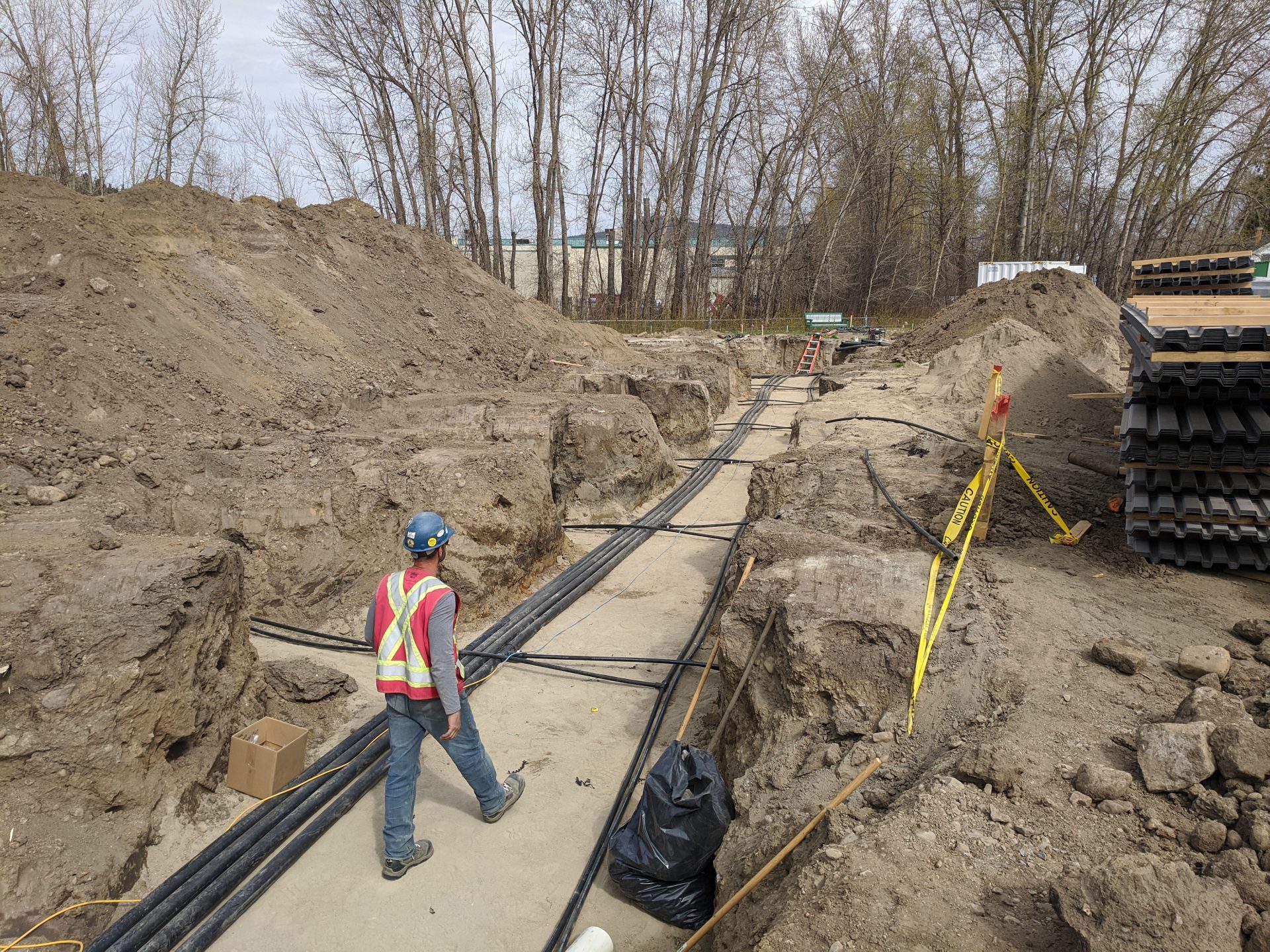
With careful design, geoexchange systems can be designed to sustainably serve one-way heavily dominant heating loads. For closed-loop type of systems, bigger GHX systems are typically required to serve one-way loads (e.g., more boreholes or deeper boreholes), and the spacing between the boreholes needs to be significantly increased so that the GHX is in thermal connection with a much greater mass of soil from which to transfer heat. For open-loop type systems serving one-way loads, greater attention to the separation between extraction and return points is required.
Importance of the Options Analysis Step
The cost for constructing the GHX portion of geoexchange systems varies by a factor of nearly ten-fold per unit capacity.
The large range is attributed to many factors including:
- GHX type (different installation methods with widely varying cost).
- Relative balance of heating loads (unbalanced loads require bigger GHX that are more expensive).
- Site-specific soil and rock conditions (localized ground conditions can be challenging for drilling or trenching which can significantly escalate cost, and because geological and hydrogeological conditions vary more widely in BC than in other regions, this factor has a more prominent effect in BC than elsewhere).
- Procurement processes (amount and type of information provided to bidders and the type of process used can significantly affect cost).
An objective evaluation of site-specific conditions and available site-specific options at an early stage in the planning process can help identify unique geoexchange opportunities (improving technical performance, reducing cost, or managing risk), and can help identify constraints or limitations that may impede suitability for geoexchange adoption.
What are geoexchange solutions best suited for?
Along with air-source heat pump systems, geoexchange heat pump systems will play a crucial and growing role in efforts to decarbonize building heating and cooling. Geoexchange is particularly suited in the following scenarios:
- Colder climate locations where air-source heat pumps are unsuitable or less effective. Geoexchange can decarbonize heating in northern BC, such as Prince George and Dawson Creek.
- Settings where the ground can be used to store rejected summer heat, or sources of waste heat, for uptake for winter heating.
- Settings where unique cost effective opportunities for ground heat exchange are available.
- Settings where silent outdoor operation is desired (in contrast with air-source heat pump systems that often generate considerable noise).
The Importance of a Thorough Design
While geoexchange heat pump systems aren’t particularly complex, they do require thoughtful and thorough design, and particular care in optimizing the integration of the geoexchange subsystems including:
1) Ground Heat Exchanger
2) Heat Pump Plant
3) Distribution System.
Heat pumps deliver heat differently than combustion systems and the design of the systems needs to take this into account. Falcon Engineering has developed a core expertise in optimizing heat pump performance based on careful monitoring of the performance of several dozen large institutional geoexchange heat pump systems we’ve designed. We’ve aggregated a lot of lessons learned expertise.
Case Study
In particular cases, such as the Canyon Falls Middle School in Kelowna, our team implemented geoexchange technology to heat and cool the school. The system consists of a network of 24 boreholes drilled deep into the underlying bedrock to a depth of 600 feet. Along with geoexchange, the school was equipped with solar PV panels, LED lighting, occupancy based controls, and a network automation system to reduce the energy use intensity of the school.
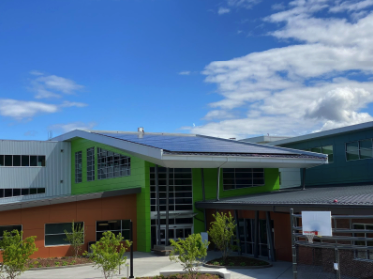
The net result is a near elimination of carbon emissions relating to the operation of this school. In this case, Falcon Engineering Ltd. provided mechanical, electrical, and energy system engineering services including energy modelling and geoexchange system design.
Conclusion
As a leader in green, energy efficient building systems, Falcon Engineering is well-suited to identify and implement low carbon energy solutions, including geoexchange where it is suitable, or identify other suitable low carbon alternatives for specific buildings in specific settings. At Falcon Engineering, our clients demand low carbon energy strategies to help guide their decision-making today, for achieving compatibility with tomorrow’s expectations. Reach out to us to speak with our highly qualified team of engineers, scientists and technical analysts about your geoexchange needs.
Find more information about our services here.
Want to learn more about energy engineering? Check out some of our other blogs!
Electrical engineering is quite a big term, and actually very recent as well. Within the 19th Century, Electrical engineering was established as a brand of engineering that deals with technology and electricity. Electrical engineers deal with a wide range of components, devices and systems, all the way from tiny microchips to giant power station generators.
A part of that range includes wiring different forms of electrical components. However, projects dealing with lighting today – both residential and commercial, have changed drastically over the years. The adoption of technological advancements have led electrical engineers to have a hand in everything that uses, creates, or harnesses electricity.
With all that said, electrical engineers play an integral role in lighting design, overall assembly of electrical components, and innovative solutions that are based on electrical code standards. How their role is critical in the development process of lighting design can be broken down into three categories: Function, energy efficiency and aesthetics.
Function
As mentioned earlier, the adoption of technology has strongly influenced the building systems and design disciplines. This holds true when it comes to commercial and residential lighting. The lighting system within a stadium compared to a two-bedroom home, has unique functionality differences. The success of an overall electrical engineer in the realm of architecture – means understanding the materials, physics, and mathematics that goes into the complicated structure.
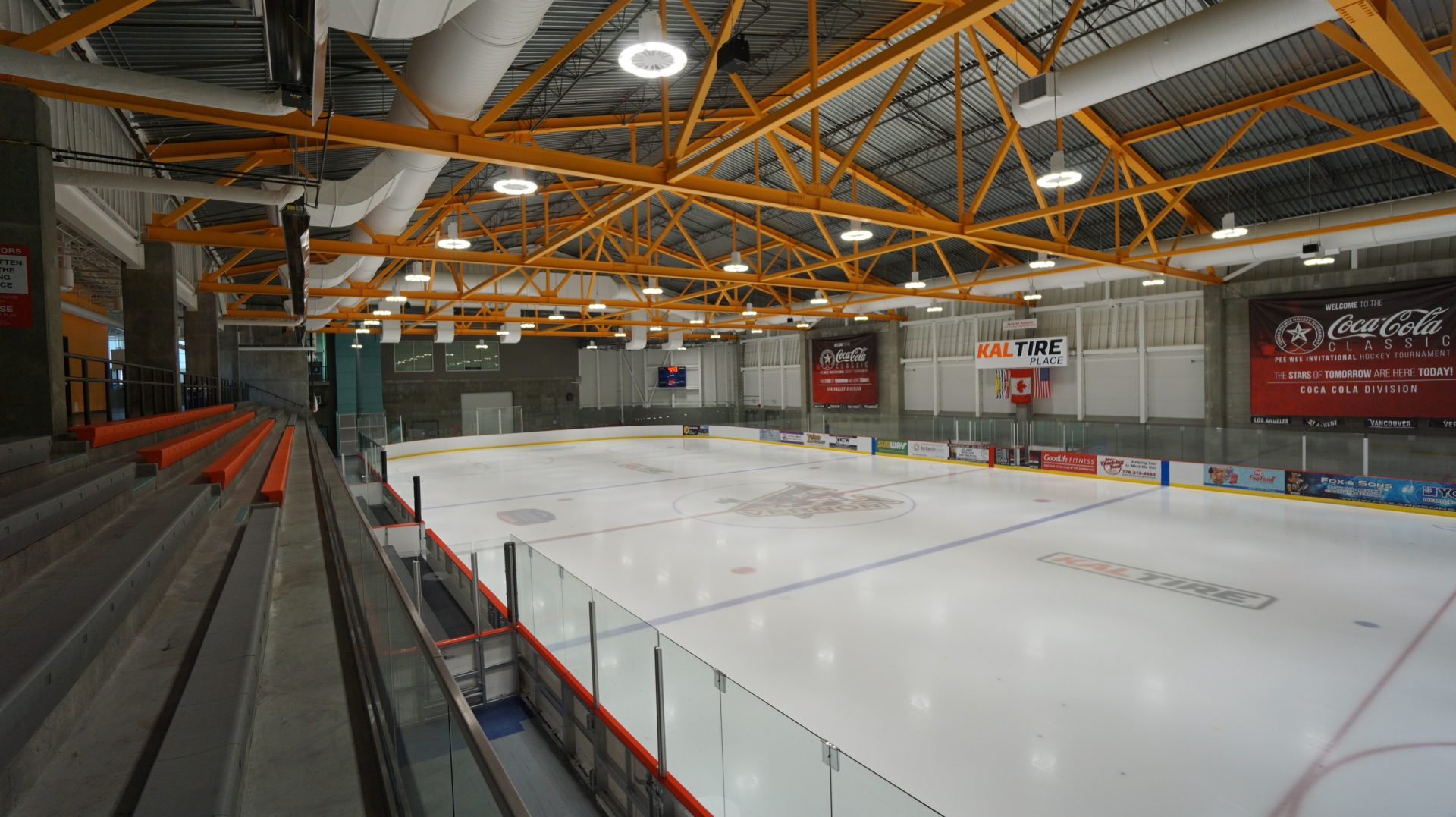
In terms of a larger stadium for instance, there are many components and timelines the electrical engineer must abide by to ensure the project is completed. A project within a stadium is larger, and relies heavily on the coordination of architects, budgets and time. Because of this, electrical engineers are an integral part of achieving deadlines with projects this large in scope.
Energy Efficiency
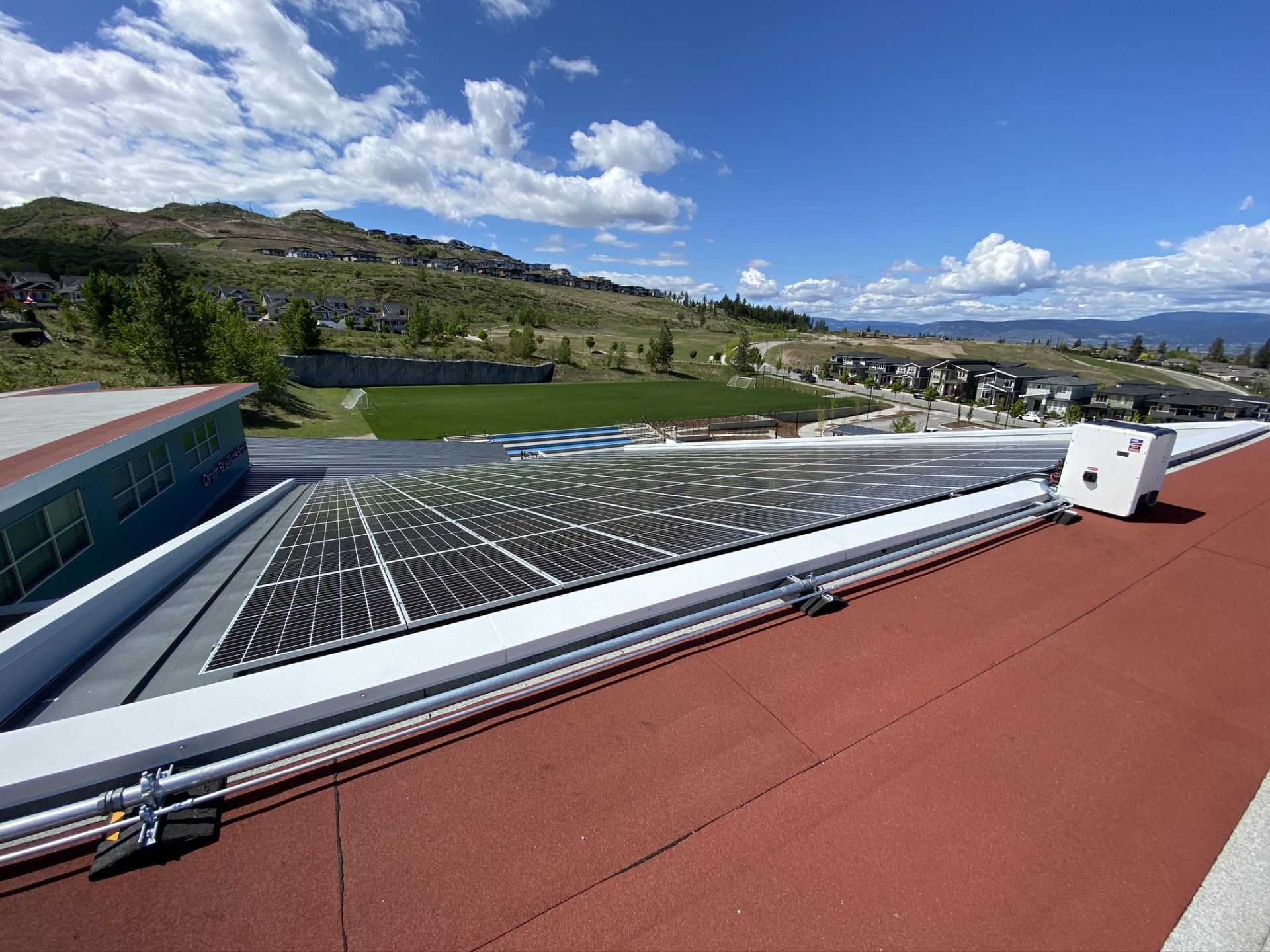
Electrical engineers are needed for every step within the project; including drafting the design, development and control. There is so much more to an electrical engineer’s role when it comes to building systems – in particular, in relation to energy efficiency. While the project may differ in terms of the scope, energy efficient buildings continue to hit an all time demand. With growing demands for upgrading outdated systems with the energy efficiency in today’s world – electrical engineers offer a huge role in adapting to these trends.
Energy efficiency lighting includes the illumination of a given space from less power by replacing high power consumption lighting with energy-preserving alternatives. Electrical engineers understand the concepts, bring technicality to the project and run the system behind implementation to provide renewable energy systems.
Aesthetics
Besides the technical aspect of understanding functionality, cost and operating an efficient flow within the process, electrical engineers play an important role in the overall aesthetic of lighting design. Consider a large structure; while it’s important to evaluate the cost, design, development, testing and equipment involved, one must also take into consideration that this is a structure which will eventually house people.
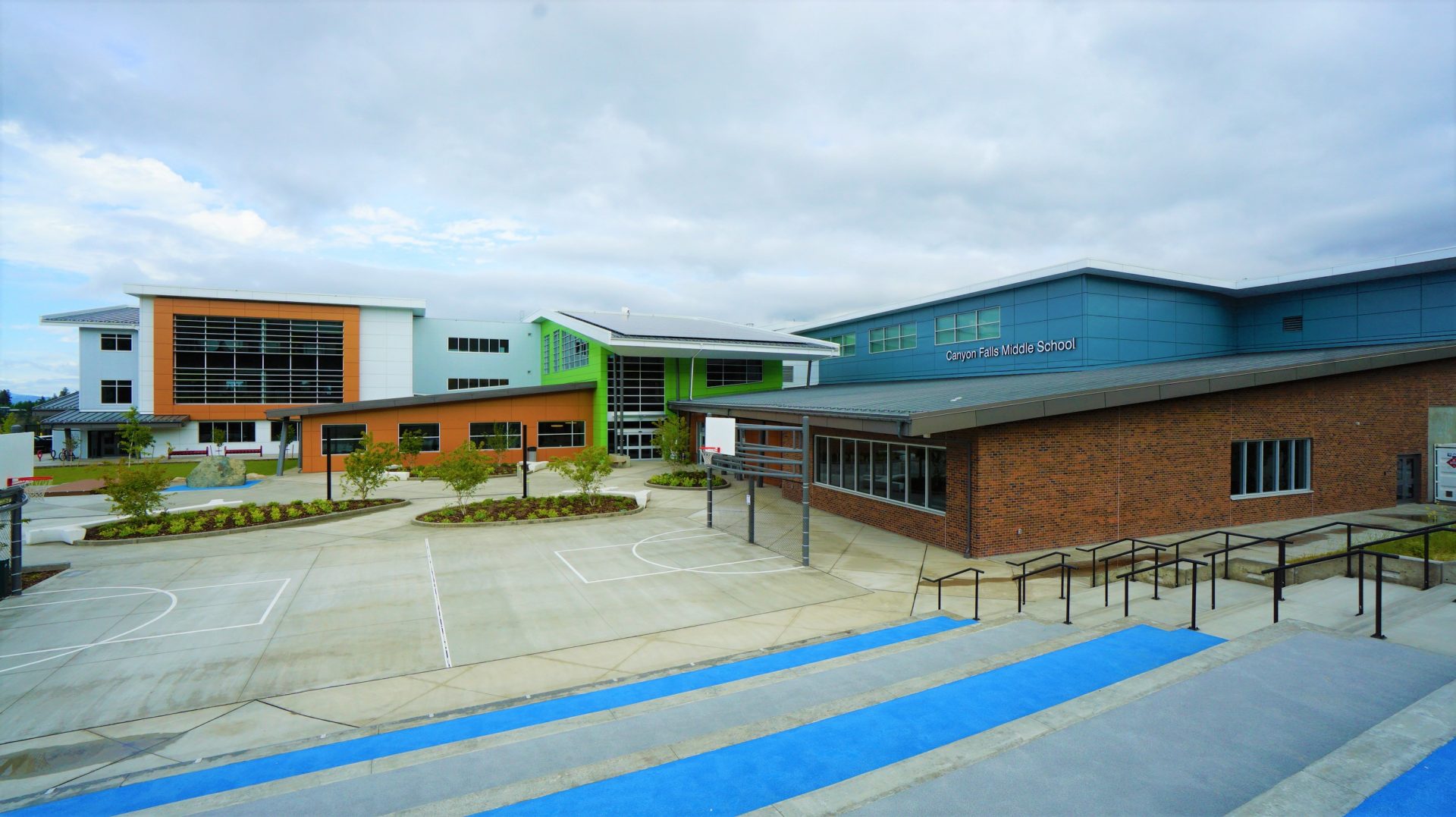
Because of this, electrical engineers will determine the quality of product and amount of lighting as a result. These aesthetics are critical in the overall comfort of guests, and the electrical engineer is key in establishing limitations involved.
Conclusion
No matter the scope of your project, an electrical engineer is integral to any process. While we are a one-stop-shop for mechanical and electrical engineering services, we also provide niche engineering services in the sustainable energy space.
Falcon Engineering is a leader in geoexchange engineering services and energy modelling – Committing to long term solutions and in-house resourcefulness. As the largest mechanical, electrical and energy engineering practice in the BC interior, Falcon Engineering brings an unmatched breadth of experience to any project.
Learn more about our electrical engineering services and what we do here.
Want to learn more about engineering services? Check out some of our other blogs!
- Integrating Renewable Energy: A Clean Energy Revolution
- The Benefits Of Solar Panels
- An Introduction To Geoexchange
The purpose of HVAC systems goes beyond that of just simply heating and cooling a space. The more valuable design to this system is to improve the air quality, which in turn, improves comfort to any building interior. An HVAC unit is an important mechanical feature, which, like any system, can result in some technical problems if not monitored.
For an HVAC engineer, evaluating, managing and troubleshooting the issues with HVAC is all a part of their scope. The system itself can be complicated and it is very beneficial and important to have a professional HVAC engineer regulate any large issues with your system.
However, to prevent these large issues, it’s even more responsible to have regular troubleshooting done, which in turn, can supply a lot of benefits in the long-run.
Energy Cost Savings
Preventative maintenance holds true to most mechanical systems – meaning, that with any HVAC system, the regular maintenance you hold on your system has substantial benefits to the efficiency in how it runs. This efficiency in the energy consumption of the unit, means great energy savings, and cost savings, long-term.
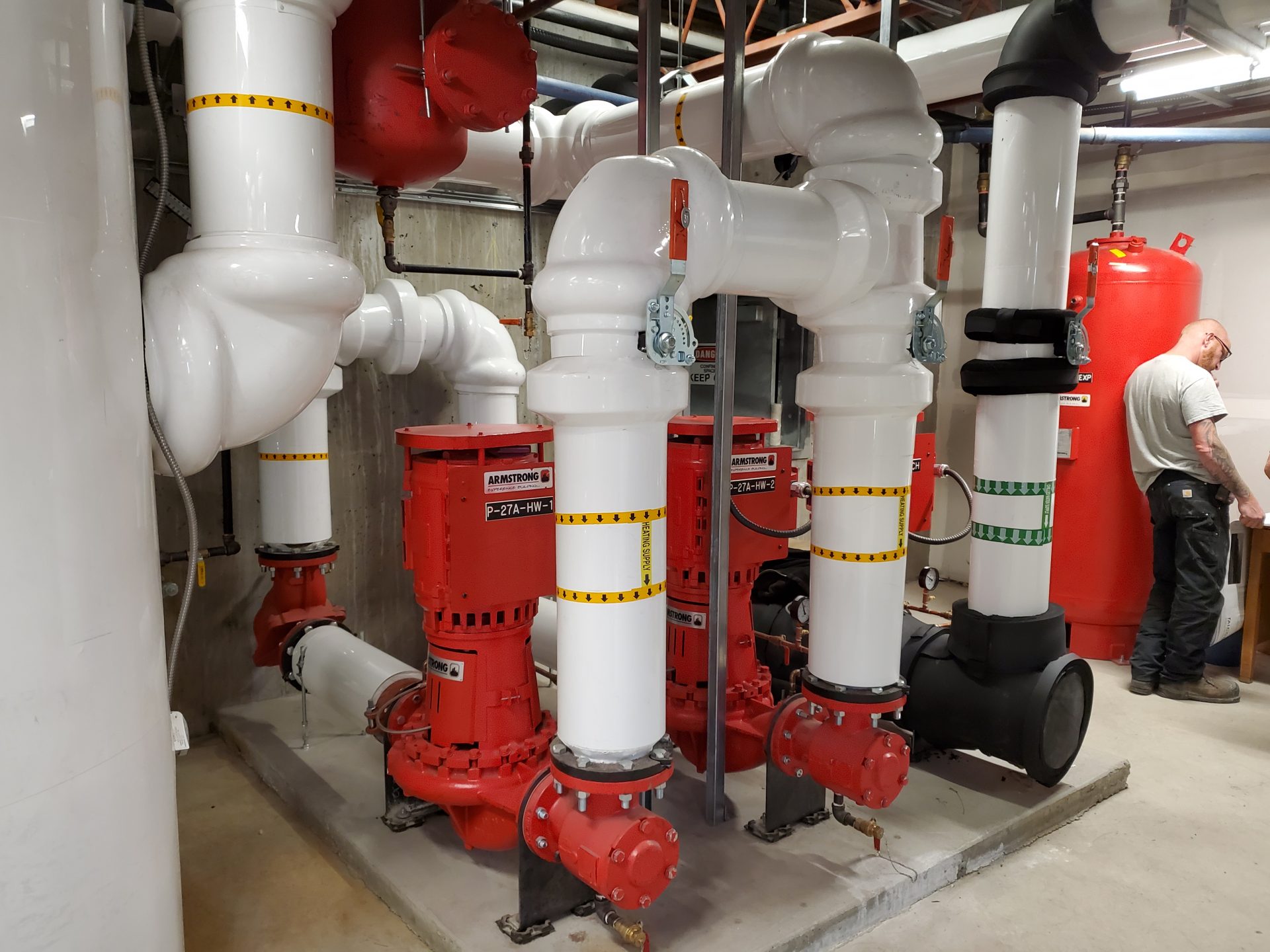
Avoid Costly Repairs
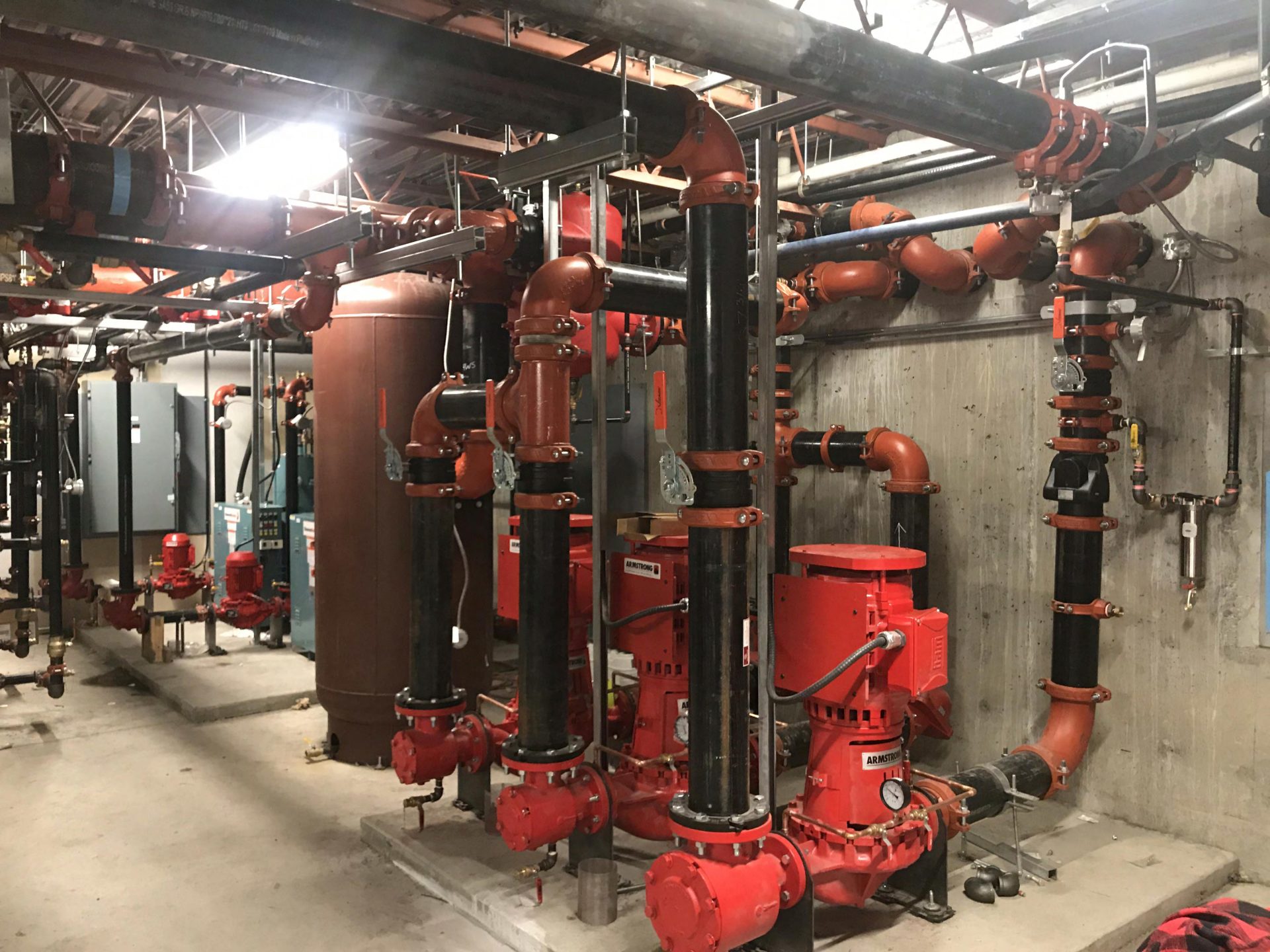
As mentioned earlier, an HVAC mechanical engineer can help regulate any large issues with the system. However, troubleshooting your system regularly can mean avoiding the expense of bringing someone in to resolve an even bigger problem. This regular maintenance can improve the lifespan of your system and overall reduce the cost of a mechanical engineer having to manage the replacements of certain components, which could be costly.
After all, you wouldn’t go over 3,000 miles without an oil change for your car – the same analogy holds true for regular maintenance and troubleshooting on your HVAC unit. Take care of your systems, and they will continue to take care of you.
Comfortable and Appealing Commercial Space
Just as much as you depend on your HVAC system keeping you comfortable all year round – so do your tenants or clients. Regular maintenance and troubleshooting will help your HVAC unit produce air flow that will distribute warm or cool air evenly throughout your space.
As a property owner, it’s essential to provide a comfortable and appealing place for short and long term rentals. The same goes as a company owner, and ensuring your space is comfortable and appealing to all current and future clients. Temperature regulation is important, however, troubleshooting your HVAC system can also improve quality of life in regard to silencing noise or reducing smell that builds up in the equipment over time.
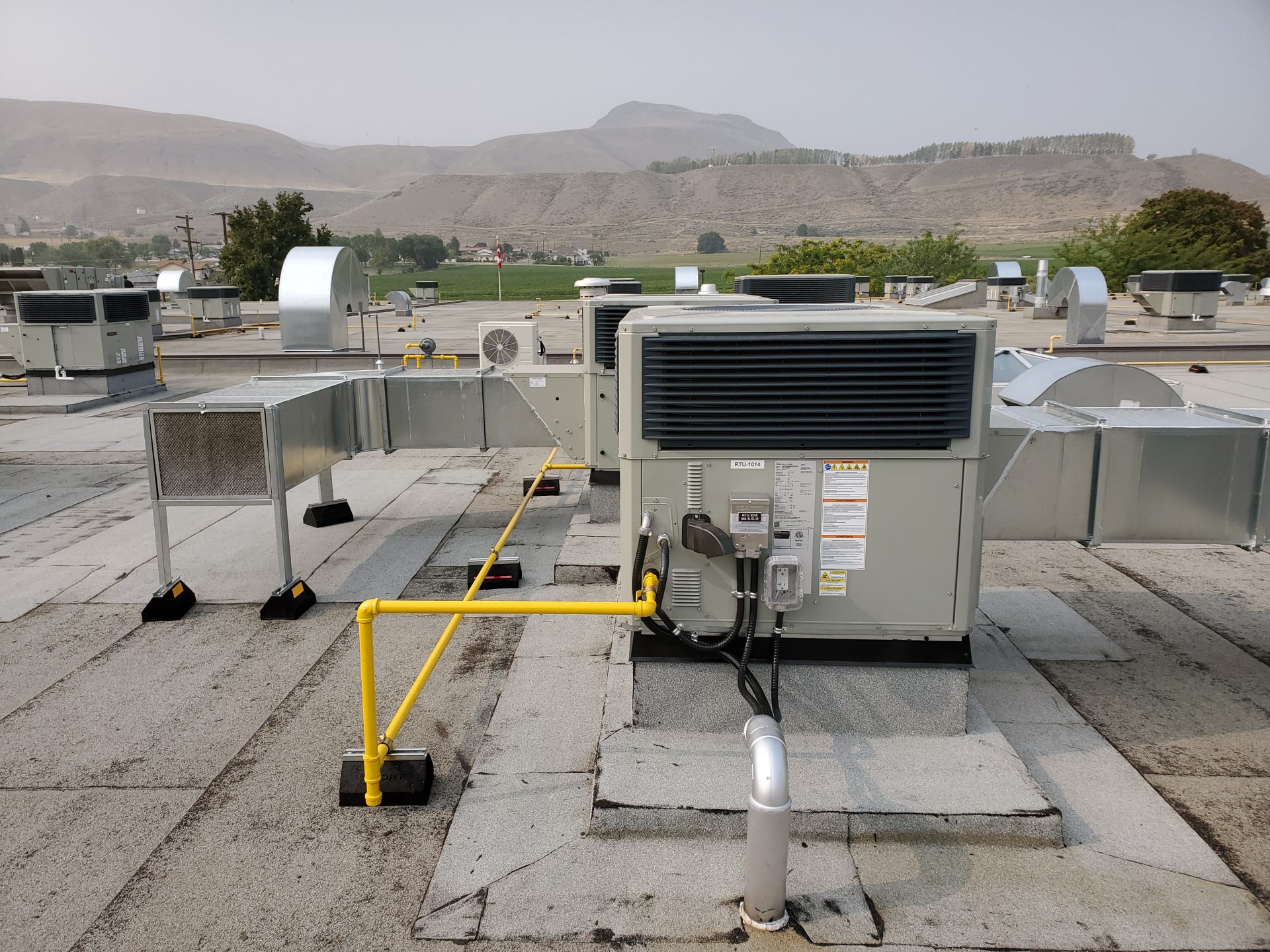
Conclusion
It’s not just about maintaining; it’s about getting full value and redeeming the benefits of a fully functional HVAC unit that is reliable, and consistent. At Falcon Engineering, we understand the execution of HVAC designs that are reliable, consistent and most importantly, energy efficient.
We provide niche engineering services in the sustainable energy space; as a leader in geoexchange engineering services and energy modelling, our responsibility is to provide mechanical solutions tailored to the needs of our clients. Our commitment is to long term solutions, and in-house resourcefulness for our clients.
If you are interested in our mechanical service offerings, you can find more information about how we help clients find solutions here.
Want to learn more about mechanical engineering? Check out some of our other blogs!
- Elements Of A Fire Sprinkler System
- Niche Mechanical Engineering Services
- 6 Ways To Make Your Classroom More Comfortable During Highly Variable Temperatures
We’re excited to announce the launch of our brand new website and brand. In planning for this redesign, we took a step back to figure out what’s most important to our clients and how we can serve them best. As it turns out, we had much to ponder! All this internal dialogue led to an exciting new step in the evolving Falcon Engineering timeline.
The roots of Falcon Engineering run deep through the City of Kelowna and throughout Western Canada. We made a name for ourselves by focusing on strategic value propositions centred around resourcefulness, long-term efficiency and attention to detail. Our brand and online presence must reflect these commitments because our clients rely on them. Below are brief descriptions of our new website pages, so you know what to expect.
Services
Our services page makes it clear what we offer. We pride ourselves on being a multi-discipline engineering firm with a complete systems approach to design and construction. We’re home to nearly 50 staff, including 14 engineers with diverse skills and a talented group of support staff that ensure continuity and consistency.
We collaborate, deliberate and arrive at solutions as a team, ensuring the client’s goal is always top of mind. Our core engineering services include:
• Mechanical – HVAC, life cycle cost, plumbing, fire sprinkler, capital planning and more.
• Electrical – Lighting, power, emergency, life safety, communication and more.
• Energy – energy options analysis, energy modeling and design, implementation of renewable energy infrastructure and more
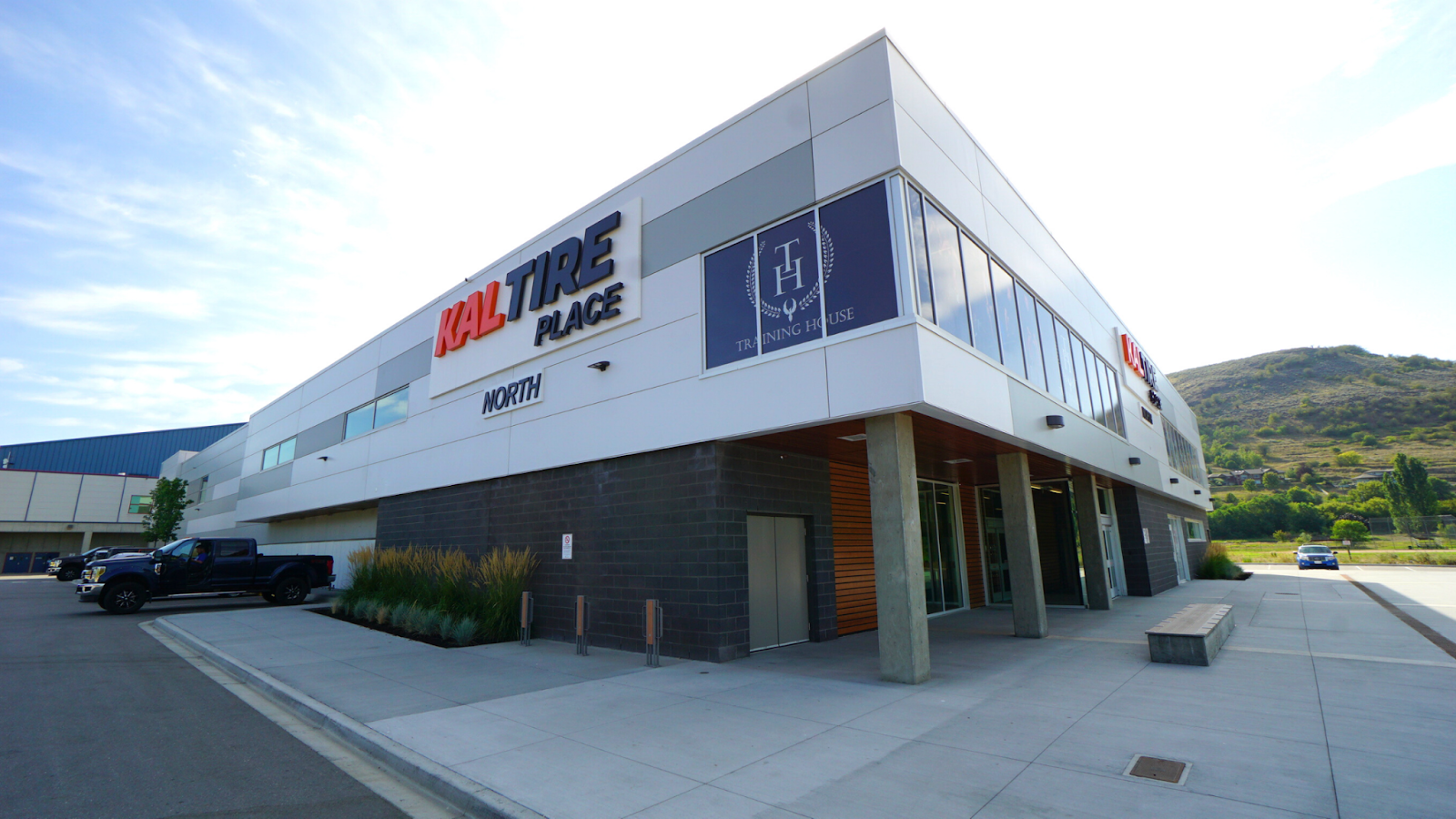
To find out more about our services, click here.
Projects
Over the years, our team has enjoyed working on a wide array of construction projects. We collaborate with project managers, architects, city and capital planners, business owners, among many others. Our commitment to resourcefulness and teamwork extends to all service providers we work with, ensuring a successful long-term project. With effective in-house and outward collaboration, we all win.
To view some of our latest projects, click here.
About Us
Like any successful construction project, our team is only as strong as the sum of its parts. And we not only attract proficient engineers to our team; we cultivate them.
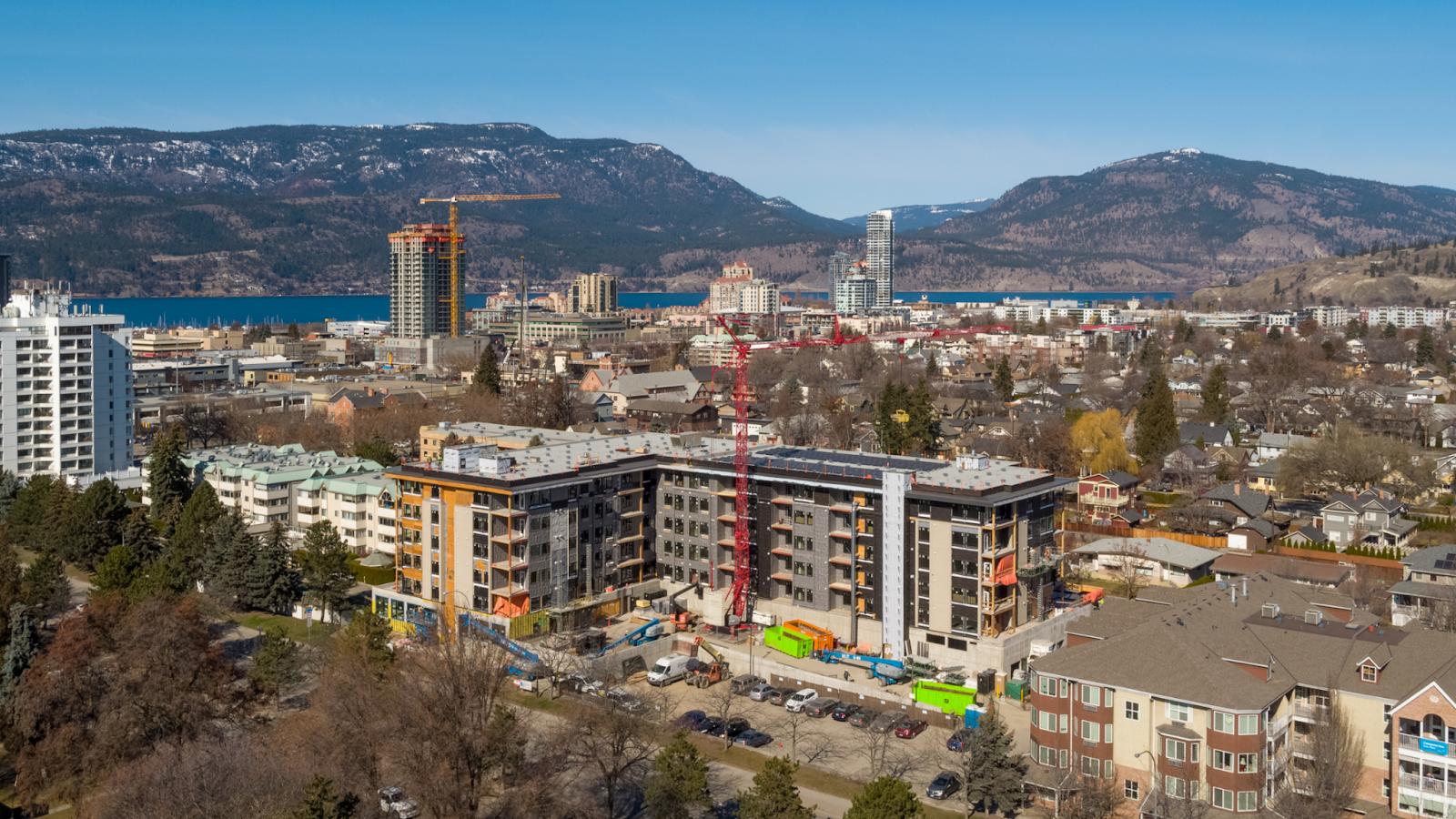
In this section, we spotlight our history, culture and principal engineers. Our extensive history hasn’t limited us from continuing to reach for new levels of proficiency. Renowned mentoring and
training programs bring every team member up to speed, equipping them for tomorrow’s engineering challenges with the right tools and skills. It’s history in motion, and we’re proud to share it with you.
To navigate to the About Us page, click here.
Blogs
It’s not just about proficiency; it’s about continued learning. Professional engineers must always stay nimble in the face of new challenges, regulations and standards. Head to our blog page, where you’ll find a continually updated series of articles, trends, project spotlights and other helpful information.

We look forward to sharing what we know with you, and we hope you enjoy exploring our new site. Let us know if you have any questions by using our contact page!
Written By Jeff Quibell, P.Eng.
Many of the systems Falcon designs are inherently hidden from public view. The adage “out of sight…out of mind” certainly applies to much of our work. As a result, there isn’t generally much public awareness about the types of systems we deliver.
Changing Times
Times are changing. We’re in the midst of a remarkable shift in the way society in Canada, and indeed around the world, perceives the use of various forms of energy. Along with this shift is an emerging new appreciation for the value of energy.
Consequently, more and more attention is focused on energy systems of all kinds, whether for our cars, homes, or the public buildings we fund and occupy. In this new era, energy systems may still be out of sight, but with greater awareness of de-carbonizing goals, energy systems increasingly become top-of-mind features.

Engineers and scientists are leading the way toward implementing effective, practical, and affordable methods to conserve energy resources and reduce energy emissions without compromising reliability or performance. Our profession is responsible for sharing progressive information and some of the challenges we face to achieve such progress.
Accordingly, we feel an obligation to engage with our clients and the greater public. We wish to relay and share information about what’s being done now and what’s to come so that we can tackle some of our time’s biggest challenges.
What Falcon is doing
A few examples of the efforts Falcon is supporting to engage in BC communities:
UBC Okanagan, Kelowna, BC. In collaboration with UBC – Okanagan, Falcon has delivered a series of guest lectures for 4th-year mechanical engineering students as they prepare to launch their careers. The lectures focused on practical (beyond the textbook) aspects of delivering high-performance HVAC energy systems. Falcon’s Don Poole, Hayley Shearer, and Jeff Quibell gave a lecture series focused on practical aspects of HVAC design, practical applications of energy modelling, and a hands-on discussion of the merits and limitations of geoexchange energy systems.
Vancouver Island University, Nanaimo, BC. In collaboration with Vancouver Island University, Falcon teamed up with the Earth Science Department of VIU to engage with students and the public. For the past four years, Jeff Quibell has delivered annual guest lectures to upper-year geology students and a public lecture on the topic of Vancouver Island University’s unique Minewater Geoexchange System low-carbon district energy system.

Okanagan College, Kelowna, BC. Falcon’s Don Poole is a born teacher. When not mentoring young engineers and technologists at Falcon, Don can be found at Okanagan College as a liaison instructor. He’s currently on hiatus from the College now as he doubles down on his teaching at Falcon. He specializes in conveying lessons learned “the hard way.”
NEAT, Energy Explorer’s Workshops. The Northern Environmental Action Team (NEAT), based in Ft. St. John, BC, does outstanding outreach work engaging with grade schools across northern BC and Alberta on environmental awareness topics. They invited Falcon’s Jeff Quibell to carry out several sessions introducing geoexchange heating to nearly all the Grade 7 classes in Fort St. John. Jeff delivered the first of these sessions in person before Covid-19 struck. Encouraged by the success of the first initiative, Jeff accepted a subsequent invitation to deliver several more sessions to Grade 5 classes (this time via Zoom, due to Covid-19). Using Zoom, NEAT drew school classes from several northern cities into the program, including Whitehorse, YT, Spruce Grove, AB, Ft. McMurray, AB, Drayton Valley, AB, Prince George, BC, and Fort. St. John, BC. In total, NEAT delivered 21 sessions to nearly 500 students. Following the sessions, Jeff commented, “the questions many of these Grade 5 students ask are so insightful”. It is so encouraging and rewarding to see such avid curiosity amongst the generation to come.
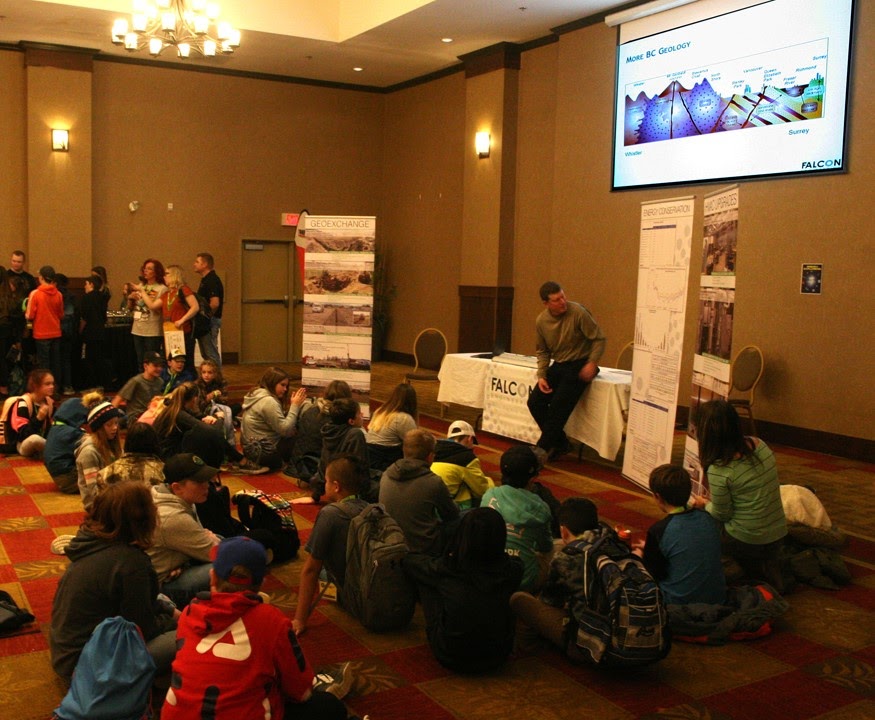
Two Way Street
The above engagements are not just an opportunity for Falcon to convey information about technology; they’re an opportunity for a two-way dialogue for us to listen to concerns, uncertainties, and wide-ranging feedback. We may not hear this type of feedback if we remain insulated within our design teams.
Engaging genuinely in the broader public sphere and learning to respond to such a wide range of views in a respectful, meaningful setting helps us become more effective communicators and better, more well-rounded designers.
Want to talk about your project? Contact us!
Written By Don Poole, P.Eng.
Falcon Engineering frequently performs surveys on existing buildings prior to an HVAC upgrade. Sometimes the equipment is ageing, or sometimes occupant comfort complaints trigger the upgrade. Here are the most common and effective means to improve comfort if air systems are being used to heat and cool spaces (if the terminal equipment is correctly sized).
1. One Unit for One Zone
Similar loaded rooms can be combined into one zone.
My mentor, Doug Joorisity, and I sorted this one out years ago when the smallest rooftop unit that was available was 5 tons. We would often design two classrooms to be served by a single rooftop unit. The classroom with the thermostat was always comfortable, while the classroom without suffered significant temperature swings. Applying Variable Volume Variable Temperature (VVT) systems to this situation did not end satisfactorily. Once the 2½ ton rooftop unit became available, you could implement an appropriate solution.
A group of offices, such as a group of councilors rooms, can be considered a single zone if they:
- Share an outside wall
- Have the same window size
- Have the same floor space
The room temperatures can be very similar in each room. The only problem might be that the occupant may want different temperatures.
2. Ducted Low-Level Return
Reduces stratification and short-circuiting, improves ventilation effectiveness and saves energy.
When I was in high school, I noticed in winter that the woodshop mezzanine where projects were stored was always significantly warmer than the main floor. I didn’t think much of that until I became an HVAC engineer and noticed that the return air in these woodshops was at ceiling level. In an upgrade to one of these woodshops, with School District 23 in Kelowna, we installed a ducted return air grille at the floor level. Matt Garbelya at the District helped us figure a way to get a filter into the low-level return to keep fine sawdust out of the return duct. By using infrared temperature measuring devices, we could see the hot air, which would have been stratified to the ceiling, drawing down to the floor.
After that, we employed a low-level return system at a large secondary school in Prince George. The existing system was multi-zoned, using the ceiling space as a return plenum and the return air grilles were merely egg crates mounted in the T-Bar ceiling. The upgrade replaced the old multi-zone systems with new ones, with low-level ducted returns employed in each classroom. The results? A school considered chronically cold in the winter became comfortable. The management noticed significant gas bill savings, and students were no longer wearing their winter jackets all day.
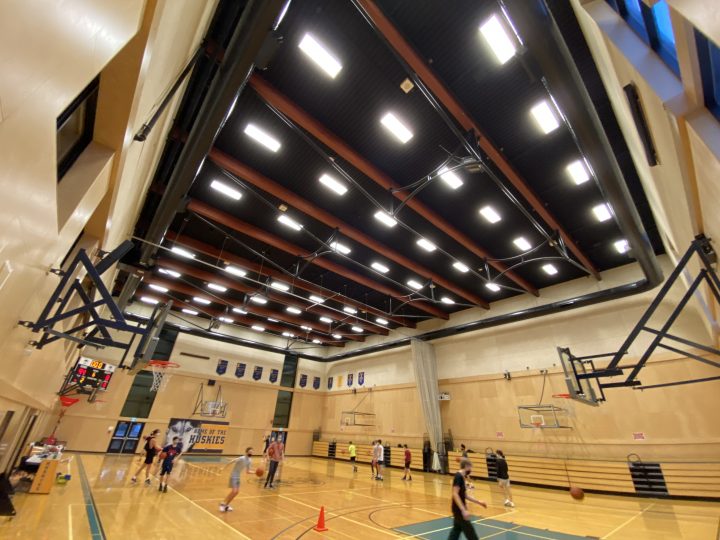
3. Positive Building Pressures
Minimizes drafts.
Rob Bruce, a sage and experienced commissioning agent, taught me that slightly positive pressure in a school significantly improves comfort. He spent many years in northern Alberta and knew how much difference it makes.
The point of pressurizing a building during the occupied mode is to eliminate drafts through the building envelope. We deployed methodology on a significant HVAC upgrade at a school in the Okanagan Valley. Prior to the upgrade, the receptionist in the central office near the main entryway was always cold. They even had an electric heater under desks to warm their feet. When interviewed after the building was positively pressurized, they reported that they didn’t need the heater all winter, and they were considering removing the heater completely!
4. Dedicated Relief Exhaust
Enables full economizing.
I completed an HVAC update at a school in Vernon. It was an older school, and I assumed that the building was leaky enough that a relief system wouldn’t suffice. That was at a time when we started to use demand control ventilation, so we measured CO2 levels. We noticed that CO2 levels in one room, in particular, would sometimes spike way beyond the limit. We experimented with the teacher – one full-class day with the door to the room closed and one day with the door open. The trend logs showed that, with the door open to form the relief path, the CO2 could be maintained at acceptable levels. We introduced a dedicated relief exhaust system and solved the CO2 problem. In addition, we achieved full free cooling (also known as economizing). Without the relief exhaust, such function was severely hindered.
The moral of that story is “You can only shove air into a pop bottle for so long”!
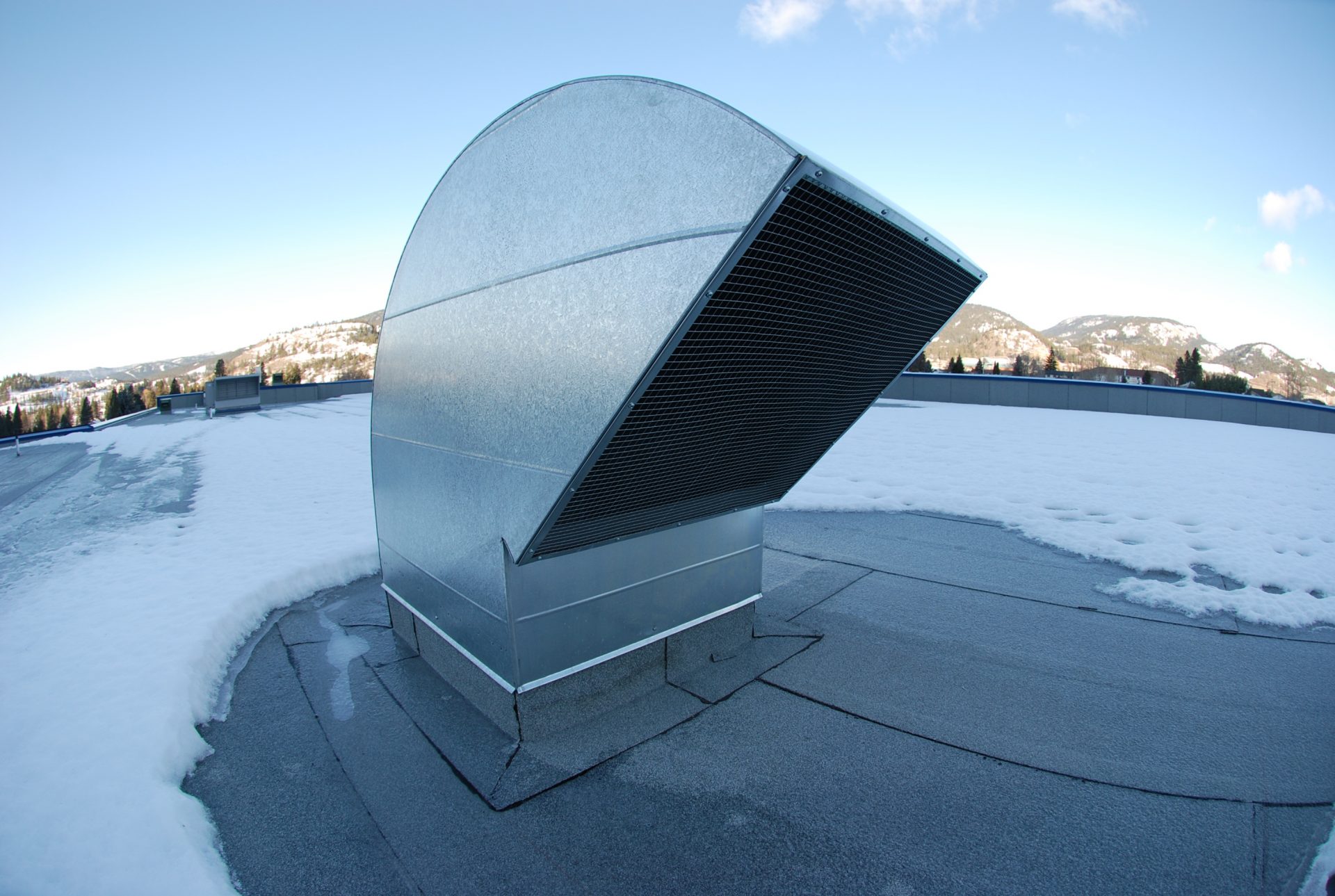
5. Tempered Outside Air
Natural ventilation isn’t effective when it is -18°C (0°F) outside
A new college building in the Interior was designed to employ natural ventilation for the outside air source. We deemed the stack effect insufficient, so we introduced large fans to create a negative pressure in the atrium. Some of the outside air was tempered, but the bulk of outside air entering the building leaked through building envelope cracks. The design resulted in awful cold drafts.
We introduced a make-up air system to reduce the negative pressure, and it helped, but nearly every single office in the whole building had a plug-in electric heater. Whatever energy the original designer hoped to save with the natural ventilation system was more than lost with the electric heaters. It was unfortunate that so many people suffered needlessly.

6. Air Outlet Velocity in the Occupied Zone is Less Than 0.25m/s (50 feet per minute)
A school hired us to investigate a problem in which classroom occupants complained of drafts. Linear diffusers were initially installed at the perimeter (presumably to wash the wall), but they were installed about 2 meters off the wall. The air outlets were too noisy with the outlets aimed horizontally, so the air outlets were left pointing downward. The cooling mode produced intolerable drafts. We replaced the linear diffusers with standard cone-style diffusers, solving this draft problem.
Conclusion
Configuration of the supply and return air systems in a classroom will significantly impact occupant comfort. This is especially true for areas experiencing extreme outdoor temperatures for both heating and cooling. We have seen significant comfort improvements in deploying the above strategies, so it’s well worth the time and effort to keep these tactics in mind during the initial HVAC design. In some cases, we see significant energy savings as well.
Let us know if you have any questions by using our contact page!
Want to learn more about mechanical engineering? Check out some of our other blogs!